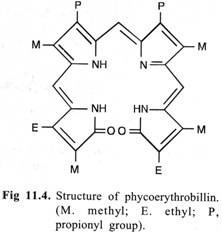ADVERTISEMENTS:
The following points highlight the four main parts of mature egg of birds. The parts are: 1. Plasma Membrane 2. Primary Egg Membranes 3. Secondary Egg Membranes 4. Ooplasm.
Mature Egg: Part # 1. Plasma Membrane:
The mature egg is covered by a plasma membrane which is the unit membrane. It is composed of an outer and an inner layer of protein. Both the layers are 50 A in thickness. Between the proteinous layers, there occurs a lipidous layer of 60 A thickness.
Mature Egg: Part # 2. Primary Egg Membranes:
In addition to the plasma membrane, the eggs of most animals except the sponges and certain coelenterates consist of certain other additional egg membranes. These membranes are known as the primary and secondary membranes. The primary egg membrane is secreted around the plasma membrane by the follicle cells of the ovary or by oocyte itself.
ADVERTISEMENTS:
In the insects, molluscs, amphibians and birds the primary egg membrane is known as the vitelline membrane, while in tunicates and fishes this membrane is known as the chorion.The mammalian eggs contain similar membrane and in them this is known as the zona pellucida.
The vitelline membrane is composed of microproteins and fibrous proteins. The vitelline membrane usually remains closely adhered to the plasma membrane but in later stages, a space is developed between the plasma membrane and the vitelline membrane and this space is known as the perivitelline space.
Mature Egg: Part # 3. Secondary Egg Membranes:
The secondary egg membranes are secreted by the ovarian tissues around the primary egg membranes. The secondary egg membrane may be composed of either jelly-like substance in the eggs of the amphibians and most invertebrates, hard shell in the eggs of sharks and rays or shell membrane and calcareous shell in the eggs of the birds. The secondary egg membranes provide protection to the developing embryo.
Mature Egg: Part # 4. Ooplasm:
ADVERTISEMENTS:
The cytoplasm of the egg cell is known as the ooplasm. The ooplasm consists of large amount of reserve food material in the form of yolk. The yolk is composed of a lipoprotein, pigment granules, water, RNA, ribosomes, mitochondria and various other cellular inclusions. The peripheral layer of the ooplasm is known as the cortex and it contains many microvilli and cortical granules.
The microvilli are formed by the outpushings of the plasma membrane and they help in the transportation of the substances from the follicle cells to the egg during the development of the egg. The cortical granules are spherical bodies of various diameters, e.g., 0.8 µ in the sea urchin eggs and 2.0µ in the eggs of frog. The cortical granules are surrounded by the unit membranes and are originated from the Golgi apparatus.
The cortical granules contain homogeneous and granular acid mucopolysaccharides. The cortical granules are present in the eggs of sea urchins, frogs, fishes, bivalve molluscs, some annelids and certain mammals but they do not occur in man, rat, guinea pig, gastropod molluscs, urodele amphibians, insects and birds.
Yolk contents of the ooplasm:
The amount of the yolk in the ooplasm varies from species to species.
According to the amount of the yolk following types of egg cells have been recognised:
1. Alecithal:
The eggs without the yolk are known as alecithal eggs, e.g., eutherian mammals.
ADVERTISEMENTS:
2. Microlecithal:
ADVERTISEMENTS:
The eggs with very little amount of yolk are known as the microlecithal eggs, e.g., Amphioxus.
3. Macrolecithal:
ADVERTISEMENTS:
The eggs with large amount of the yolk are known as the macrolecithal eggs.
The macrolecithal eggs can be grouped into two types on the basis of the distribution of the yolk in the ooplasm:
(a) Homolecithal:
The eggs with evenly distributed yolk contents in the ooplasm are known as the homolecithal eggs, e.g., eggs of echinoderms.
ADVERTISEMENTS:
(b) Heterolecithal:
The eggs in which the yolk is not evenly distributed in the ooplasm are known as the heterolecithal eggs.
The heterolecithal eggs may be of following types:
(i) Telolecithal:
ADVERTISEMENTS:
When the amount of the yolk is concentrated in the one half of the egg to form the vegetative pole, the egg is known as the telolecithal egg, e.g., eggs of amphibians, etc.
(ii) Meiolecithal:
In the meiolecithal eggs, the amount of the yolk is very large and it occupies the largest portion of the egg except a small disc-shaped portion of the cytoplasm. The cytoplasm contains the zygote nucleus and is known as the germinal disc, e.g., eggs of fishes, reptiles and birds.
(iii) Centrolecithal:
In the centrolecithal eggs, the yolk accumulates in the centre of the ooplasm, e.g., eggs of insects.

